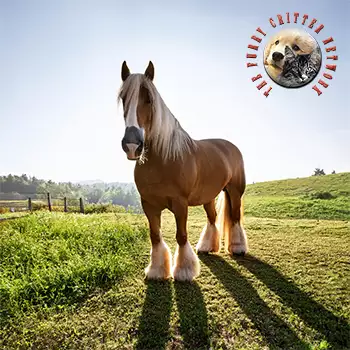History
History shows that Belgians are direct lineal descendants of the "Great Horse" of medieval times. The Belgian, as the name implies, is native to the country of Belgium. This little country is blessed with fertile soil and abundant rainfall, providing the thrifty farmers of Belgium with the excellent pastures and the hay and grain necessary to develop a heavy, powerful breed of horse.
Belgium lies in the very center of that area of Western Europe that gave rise to the large black horses known as Flemish horses and referred to as the "Great Horses" by medieval writers. They are the horses that carried armored knights into battle. Such horses were known to exist in that part of Europe in the time of Caesar. They provided the genetic material from which nearly all the modern draft breeds are fashioned.
Stallions from Belgium were exported to many other parts of Europe as the need to produce larger animals of draft type for industrial and farm use was recognized. There was no need to import into Belgium for she was the "mother lode." It remained only for this ancestral home of the "Great Horse," by whatever name, to refine and fix the type of the genetic material she already had at hand.
The government of Belgium played a very energetic role in doing just that. A system of district shows culminating in the great National Show in Brussels was established to serve as an international showcase for the breed. The prizes were generous. Also, inspection committees for stallions standing for public service were established.
Behavior
The Belgian Draft Horse is extremely quiet, docile and patient.
Function
The Belgian is known for it's kind temperament and is easy to handle. They are still used for all manner of draft work, including plowing, logging, pulling carriages, hitches and sleighs. In addition, the riding of draft horses is becoming increasingly popular, in a variety of disciplines from western to jumping.






